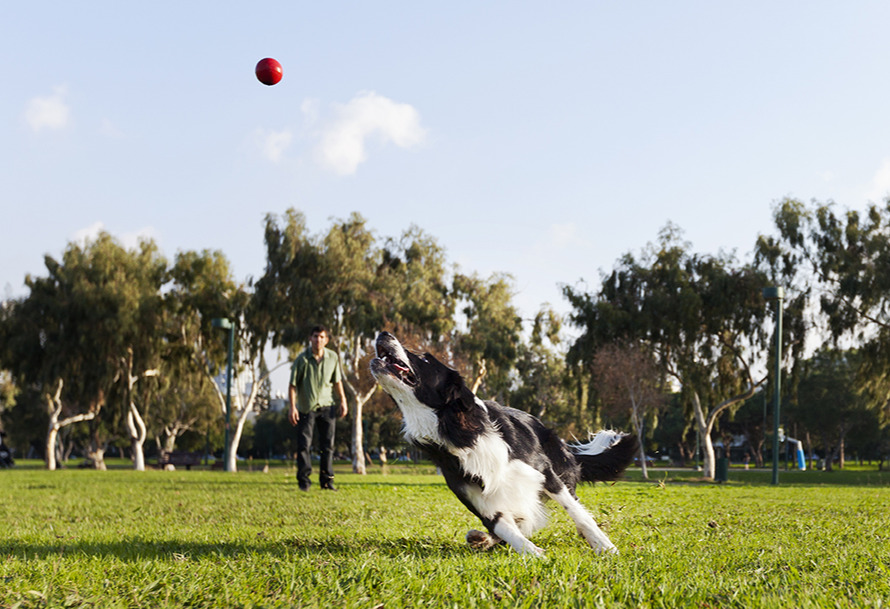Dog Training Essentials: Choosing a Reward that Works for Your Dog

Positive reinforcement is critical in encouraging repetition in dog training, but not all dogs respond the same way to the same rewards. When you know how to motivate your dog with the right reward, your dog can be driven to learn – but with the wrong rewards, training will be a chore for you both.
Positive Reinforcement Training
When training your dog, rewarding them after they perform a desired behavior creates a link between the behavior and getting the reward. Practicing the same behavior with further positive reinforcement strengthens that link and encourages repetition.

For positive reinforcement to work, a reward must be something your dog desires. If the reward is something your dog wants, they will get excited at the opportunity to be rewarded again and repeat the behavior for more of the reward! If the reward is not something that motivates your dog, they will show no interest in repeating the behavior, and you should try another form of motivation.
How to Figure Out What Your Dog Likes as a Reward
You’ll need to pay close attention to your dog’s body language and how they respond to your current training approach in order to determine the best reward for your dog.
Body Language
Body language is a great way to determine whether a reward appeals to your dog. For example, if a reward is something your dog likes, they may wag their tail, perform a command before being asked to, or beg for more of the reward. If a reward does not appeal to your dog, they will show no interest in getting it – and may not even look your way!
Training Progress
Monitoring your dog’s training progress is another way to determine whether or not a reward is effective. For example, if your dog shows no interest in training when you use chicken flavor treats as a reward but becomes interested in training when you use beef treats, you know that chicken treats do not motivate your dog.
Pay Attention to Your Pup
When choosing a reward for your dog, you can take cues on what type of rewards your dog likes by paying attention to them during everyday actions. Pay attention to what your dog likes to do – what makes their tail wag? Do they get excited when you put your hand in the treat bag, or do they prefer when you grab their tennis ball?
How to Reward Your Dog
There are multiple methods of rewarding your dog for a job well done, including treats, attention, playing games, new toys, and time outdoors. Once you have figured out what your dog likes, you can use your dog’s favorite reward method to encourage them to repeat training commands.
Feed Them Treats
Many dogs are food motivated, which makes treats a great motivation when training. Not all dogs like the same type of treats, though, so you may have to try different treat textures or flavors. For example, try chicken, beef, pork, or fish flavored treats, soft, freeze-dried, raw, or crunchy treats to see which your dog likes best.

Give Them Attention
Some dogs have a better response to attention than they do to treats. For example, petting your dog on the head or giving belly rubs and calling them a “good boy!” might be more encouraging to your dog.

Other ways you can give your dog attention include:
- Brushing them
- Taking a walk together
- Giving them scratches
- Rubbing their ears
Play Games With Them
Playing games is another reward for some dogs. For example, you might try playing fetch or tug of war after a successful command and eventually after the whole training session.
Other games you can play include:
- Hide and seek
- Agility course running
- Tag
- Soccer

Try New Toys
New toys can also motivate dogs when implementing positive reinforcement training. For example, a new type of ball, a new plush toy, or a new Frisbee may encourage your dog to follow commands more than another reward.
Let Them Outside
Playtime outdoors can also be a great positive reinforcement reward for dogs that enjoy being outside. For example, by using a GPS dog fence, you can train your dog and reward them for a job well done by allowing them to free roam in your backyard.

Positive reinforcement with a motivating reward is one of the best means of training your dog. With so many options, finding the best reward for your dog is as easy as watching their behavior and seeing how they respond to different incentives. Happy training!
Author Bio:
Amy Brannan is a British native who currently resides in North Carolina with Jet, her 15-year-old senior black lab. Throughout her life, Amy has been owned by numerous Labrador retrievers, a Great-Dane pit-bull mix, and a very demanding border collie. For over 16 years, Amy has dedicated her life to dog training, and she currently works as a freelance writer, promoter of rescue dog awareness, and part-time for a local veterinary clinic.
Related Stories

The 5 Types of Enrichment for Dogs & Their Benefits
A well-rounded canine enrichment program should include five types of enrichment activities – social, nutritional…

How Leash Walking Alone Hurts Your Dog's Mental Health
You probably walk your dog every day – maybe even multiple times per day – on a leash to get their...

Recall Training for Off-Leash Dogs: 6 Tips for More Reliable Recall
Dog recall training is about more than ensuring your dog returns to you reliably when called; it is also…
Read More